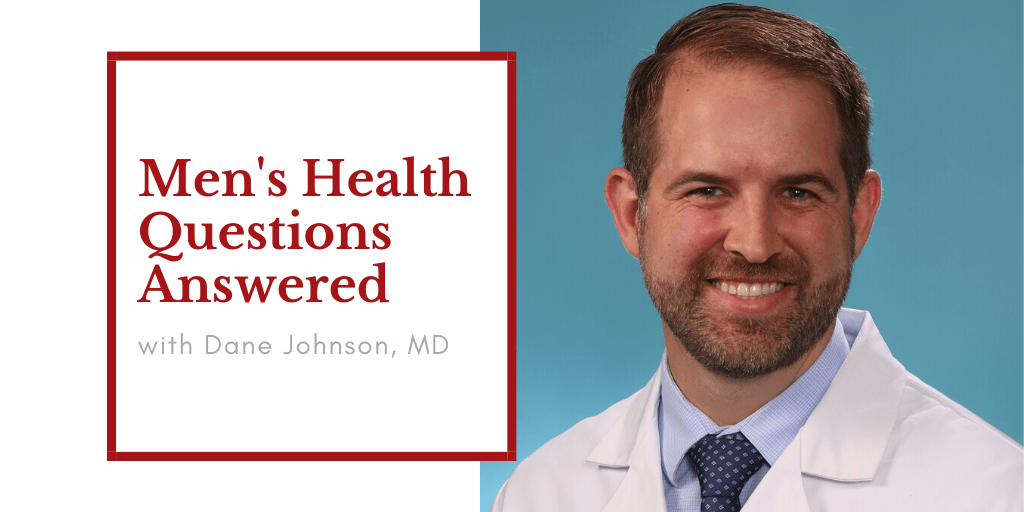Men’s health topics are important to discuss with a doctor, but for many men it is difficult to have these conversations with their health care provider. Discussing sex, prostate health and hormonal imbalance can be uncomfortable, but understanding these conditions and how they affect overall health is critically important for every man.
Dane Johnson, MD, Assistant Professor of Urologic Surgery at Washington University School of Medicine in St. Louis, specializes in men’s health. Johnson sees couples for male factor infertility, helping couples achieve pregnancy through his urologic expertise. He encourages men to ask their questions and engage in honest conversations with their doctors. To help start this conversation, Johnson answers some of the questions regarding a sensitive, but important men’s health procedure: Vasectomy Reversal.
Vasectomy Reversal Questions Answered
Can a vasectomy be reversed?
Yes!
I often see couples in my fertility clinic to address concerns of fertility after a vasectomy. Vasectomy is the most common form of surgical sterilization. For most couples, vasectomy is a good option for a permanent form of birth control when they do not want to have children.
In some cases, however, a couple might wish to have a vasectomy reversed. Most men interested in vasectomy reversal want to regain fertility. Couples interested in having children after a vasectomy need to know about their options.
Vasectomy reversal may also be an effective treatment for chronic pain after a vasectomy. Roughly 1-2% of men who have a vasectomy experience long-term pain after their procedure. Undergoing vasectomy reversal may reduce this pain.
How does vasectomy reversal work?
During a vasectomy, the vas deferens is severed so that sperm cannot travel from the testicles. Vasectomy reversal is the surgical reconstruction of the vas deferens. By reconnecting this tube, sperm can once again be carried from the testicles.
A vasectomy can be reversed using a microsurgical approach that reconnects the vas deferens to hopefully return patency—the return of sperm—to the ejaculate.
Once a vasectomy has been successfully reversed, couples have a pregnancy rate somewhere between 30-70% in the following 1-2 years after surgery.
There are two surgical approaches to vasectomy reversal.
The most common form of vasectomy reversal is vasovasostomy. This is where the two cut ends of the vasectomy site are reattached using a microsurgical technique. Vasovasostomy achieves a patency rate of 90-95%.
Depending on the time since vasectomy, some patients might not be able to have vasovasostomy.
Men who have had long periods of time since their vasectomy may have developed an obstruction downstream from the vasectomy site as a result of pressure that can back up towards the testicle. If that pressure reaches the epididymis—a structure located right next to the testicle—blockage may scar down at that location.
In that situation, we can perform an epididymostomy. The vasectomy site is reapproximated next to the epididymis, which is much closer to the testicle. This involves a larger incision, and allows us to achieve a patency rate of 60-70%. This procedure is most often used for patients 15 years after their vasectomy.
What is the recovery process like after vasectomy reversal?
Surgery for vasectomy reversal is an outpatient procedure that typically takes 3-4 hours. Patients can go home the same day, and are often back to work within a week after surgery.
Some patients experience mild swelling and bruising, but most patients experience only mild pain that requires medication for a couple of days. Patients recovering from vasectomy reversal should expect to take a week off after surgery, and can resume full, unrestricted work at two weeks from surgery.
Men should wait at least 2 weeks after surgery before resuming sexual activity. After a successful vasectomy reversal, couples may be able to achieve pregnancy almost immediately. We will obtain semen analyses at 6, 12 and 24 weeks after surgery to measure the outcomes of the procedure.
Can a vasectomy reverse itself?
No. Once a man has a proven negative semen analysis, the vasectomy is permanent unless surgically reversed. It is not possible for the vas deferens to re-align or reverse itself.
What if I have had a prior failed vasectomy reversal?
For men who have had a prior vasectomy reversal and were found to have zero sperm in the ejaculate, there are other options. Some men may consider undergoing a re-do vasectomy reversal.
We also offer a procedure called testicular sperm retrieval, in which sperm are taken directly from the testicle. These sperm can then be used for in-vitro fertilization, so that couples still have the opportunity to achieve pregnancy.
Why should I see a Washington University Urologist if I am considering vasectomy reversal?
Vasectomy reversal is a major decision. Urologists at Washington University School of Medicine are experts in their field. A microsurgeon specializing in male fertility can help you understand your options and reach a decision that meets your goals.
Urology problems can be very complex, and difficult to discuss. We appreciate your openness and willingness to trust in our expertise. We will do everything we can to take care of you and aim for the best outcome.
